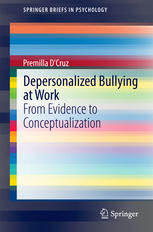

Most ebook files are in PDF format, so you can easily read them using various software such as Foxit Reader or directly on the Google Chrome browser.
Some ebook files are released by publishers in other formats such as .awz, .mobi, .epub, .fb2, etc. You may need to install specific software to read these formats on mobile/PC, such as Calibre.
Please read the tutorial at this link: https://ebookbell.com/faq
We offer FREE conversion to the popular formats you request; however, this may take some time. Therefore, right after payment, please email us, and we will try to provide the service as quickly as possible.
For some exceptional file formats or broken links (if any), please refrain from opening any disputes. Instead, email us first, and we will try to assist within a maximum of 6 hours.
EbookBell Team

0.0
0 reviewsThe book advances the nascent concept of depersonalized workplace bullying, highlighting its distinctive features, proposing a theoretical framework and making recommendations for intervention. Furthering insights into depersonalized bullying at work is critical due to the anticipated increased incidence of the phenomenon in the light of the competitive contemporary business economy, which complicates organizational survival.
Drawing on two hermeneutic phenomenological inquiries set in India focusing on targets and bullies, the book evidences that depersonalized bullying is a sociostructural entity that resides in an organization’s structural, processual and contextual design. Enacted by supervisors and managers through the engagement of abusive and aggressive behaviours, depersonalized bullying is resorted to in the pursuit of competitive advantage as organizations seek to ensure their continuity and success. Given the instrumentalism associated with the world of work, targets and bullies encountering depersonalized bullying display largely ambivalent responses to their predicament. Ironically, then, organizations’ gains in terms of effectiveness are offset by the strains experienced by these protagonists.
The theoretical generalizability of the findings reported in the book facilitates the development of an integrated framework of depersonalized workplace bullying, laying the foundations for forthcoming empirical and measurement endeavours that progress the concept. The book recognizes that whereas primary level interventions mandate repositioning the extra-organizational environment and/or recasting organizational goals to balance business and employee interests, secondary level and tertiary level interventions encompass various types of formal and informal social support to address targets’ and bullies’ interface with depersonalized bullying at work.